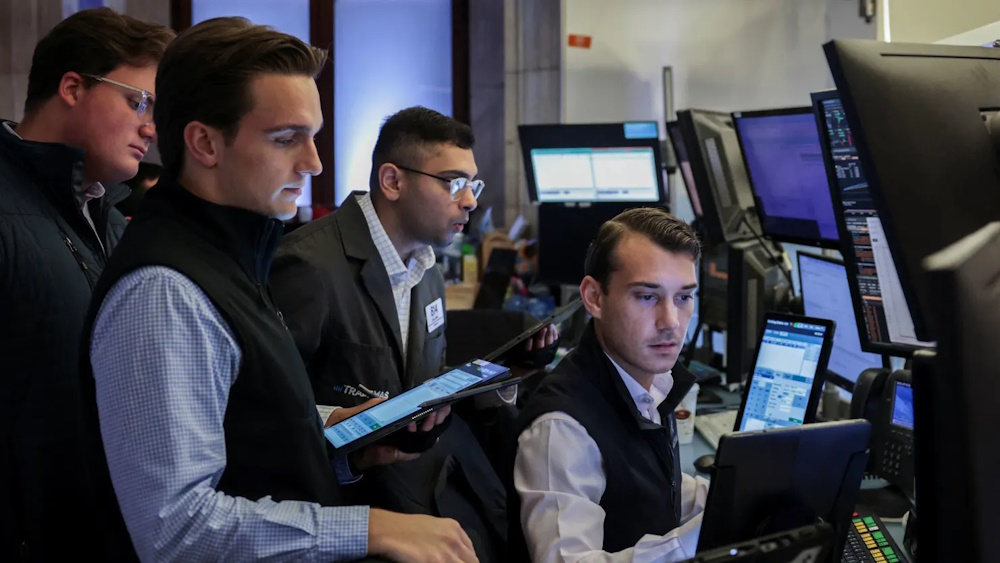
The excitement surrounding artificial intelligence has driven markets to unprecedented levels this year. However, the rapid increase has also sparked worries regarding the potential formation of a bubble. Since 2022, when OpenAI first launched ChatGPT, AI has emerged as the prevailing theme in markets. Investor sentiment has shifted towards optimism regarding a possible transformative AI boom, resulting in significant capital inflows into technology stocks. Valuations have ascended to levels that are historically considered expensive. To certain analysts, these indicators suggest that the market may be experiencing a bubble — a phenomenon where investors inflate stock prices beyond their intrinsic value, leading to an unsustainable rally that frequently culminates in a substantial decline, reminiscent of the dot-com bubble that collapsed in 2000. Major technology firms such as Meta, Microsoft, and Amazon have invested hundreds of billions of dollars in data centers and infrastructure to develop and support AI, and have allocated additional hundreds of billions for future expenditures.
The earnings results of these companies persist in impressing market participants, thereby reinforcing elevated valuations and contributing to the ongoing rally in equities. Concerns are increasingly being raised regarding the sustainability of the current situation and the potential repercussions that could arise from a substantial decline in stock values. “Fired up by optimism about the productivity-enhancing potential of AI, global equity prices are surging,” stated Kristalina Georgieva, during a speech on Wednesday. “Today’s valuations are approaching levels reminiscent of the optimism surrounding the internet 25 years ago,” Georgieva stated. “In the event of a significant correction, more stringent financial conditions may impede global growth.” Concerns regarding a potential bubble have intensified in recent weeks, as prominent AI companies such as Nvidia and OpenAI revealed deals involving circular financing, raising suspicions that leading players may be artificially sustaining the market. Strategists note that the increase in valuations and the advent of circular financing are characteristics that “rhyme with previous bubbles. While it appears we are not in a bubble yet, high levels of market concentration and competition in the AI space suggest investors should continue to focus on diversification.”
Notwithstanding apprehensions, the demand for anything associated with AI remains robust. OpenAI on Monday announced a new deal with chip company Advanced Micro Devices, resulting in a remarkable increase of nearly 24% in AMD’s shares. The recent rally has elicited parallels to the dot-com bubble. However, investors noted a significant distinction: Major technology firms are currently generating profits and reporting robust earnings outcomes. “Unlike the 1990s tech bubble that featured soaring stocks from unprofitable early-stage companies, strong mega-cap company earnings are driving this year’s rally,” Eric Freedman noted. Mike Mullaney, director of global markets research at Boston Partners, indicated that the market is suggesting a state of “bubble light” territory. He stated that investor sentiment has not yet attained the levels of exuberance that would indicate the market is at peak risk levels. “Valuations, positioning and flows are all certainly signaling that we’re in bubble light territory, but sentiment has just not got there yet,” Mullaney stated. “Thus, this situation has the potential to continue its trajectory.” Big Tech represents a growing force within the S&P 500, which is structured according to the market capitalization of its constituent companies. AI-related stocks have propelled the market to unprecedented heights, simultaneously increasing their prominence within individuals’ 401(k) retirement portfolios. The swift ascent of technology equities enables individual investors and those preparing for retirement to benefit from corporate profits, yet it also exposes them to the risk of a prolonged downturn should a bubble collapse. The Bank of England on Wednesday indicated that the likelihood of a significant decline in the stock market has risen. “On a number of measures, equity market valuations appear stretched, particularly for technology companies focused on artificial intelligence,” the bank noted in a quarterly report.
“This, when combined with increasing concentration within market indices, leaves equity markets particularly exposed should expectations around the impact of AI become less optimistic,” the bank stated. In 1996, the then-chair of the Federal Reserve, Alan Greenspan, posed the question of whether “irrational exuberance” was beginning to permeate financial markets. Although Greenspan cautioned that the stock market might be excessively driven by sentiment, the apex of the dot-com bubble did not occur until four years later in 2000. On September 23, Federal Reserve Chair Jerome Powell remarked that stocks are “fairly highly valued,” echoing sentiments expressed by his predecessor three decades prior. Ed Yardeni, remarked in a note: “Is the stock market returning to the path of the same irrational exuberance that characterized the Tech Bubble of 1999, which was succeeded by the Tech Wreck of the early 2000s?” It is a possibility. “However, the S&P 500 has been driven to new highs this year by better-than-expected earnings,” Yardeni stated. “Our objective remains for the S&P 500 to reach 7,700 by the conclusion of the upcoming year.”

